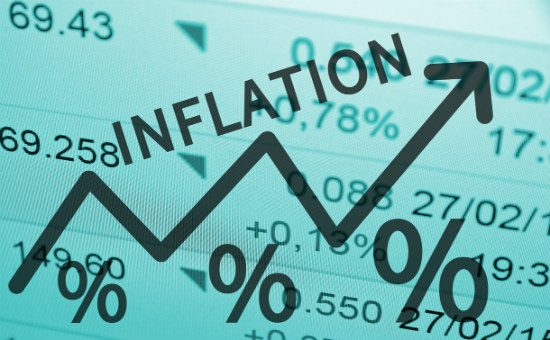Will The Next Economic Crisis Be Inflationary Or Deflationary?
“For the past three and a half decades, the principal shocks have not been inflationary, like the 1973 and 1979 oil crises, but rather deflationary, like the US savings and loan crisis in the 1980s and 1990s, the 1997 Asian crisis, the 2000 dot-com busts, the terrorist attacks of September 11, 2001, the 2007 subprime collapse that began in the US, and the 2010 European debt crash.”(J. Bradford Delong, The A historical Federal Reserve, Project Syndicate, August 8, 2018)
“Technology-driven deflation is a primal force that will shape the rest of our lives. Tell your children and your investment advisor. Like gravity, we’ll all have to figure out how to live with it.” (Dave Margulius, Inflation Shook the Markets This Week—But Deflation Is the Force to Watch, Feb. 8, 2018).

Investors are continuously spooked by the specter of rising interest rates and higher inflation. But perhaps after a full decade following the great financial meltdown they should be focusing just as hard on deflation.
Indeed, in recent years deflation has been neutralizing inflation’s impact on wages and prices, with the notable exception of asset prices.
This economist’s experience, which goes back to the last century, was that economic shocks to the U.S. economy always seemed to be related to inflationary pressures, and/ or to the restrictive monetary policies which were imposed to fight inflation.
However, as Bradford Delong reminds us, over the past three and a half decades the source of disturbance seemed to shift in the direction of financial crises often were associated with deflationary pressures.
Deflation is usually defined as a decrease in the general price level of goods and services. For example, during the 1930s Great Depression, deflation was present most of the time.
When deflation continues for a long time, business and consumer incentives change drastically from spending to hoarding. After all, why spend money now if prices will be lower in the future? In deflationary periods demand falls as individuals and businesses wait for lower prices.
The expectation of continuous deflation tends to slow or shrink an economy, diminish jobs and of course lower wages.
When deflationary pressures persist, as it has in Japan for nearly 20 years, it can create a deflationary spiral that can cause or aggravate a recession. And, if deflation persists long enough, a depression may ensue.
What we are encountering at present is not quite so bad, but there is little question that the so-called booming economy has not translated into higher real wage earnings.
This may be because, as some have argued, deflation around the world has become somewhat structural.
The structuralist concept of deflation seems tied to economic modernity and new technologies, globalization trends, e-commerce, fracking, cheap overseas labor, etc.,
It does seem today that every product or service that can be produced with technology just keeps getting cheaper and cheaper.
Disclosure: None.




Deflation is a risk that is made worse by the Fed's willingness to assist it. The new normal is where the Fed feels comfortable and it is accompanied by slow growth, lower wages and low bond yields. Add to this the asset inflation and it is a squeeze on working America.